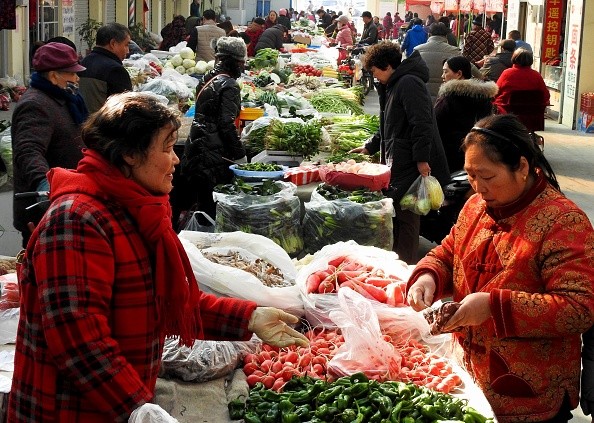With inflation rate at a low level, China's central bank is expecting a rise in consumption, which is an indication that consumer demand is rising, a Forbes article said.
One of the main goals of China's current economic program is to boost consumption by encouraging people to spend on items such as food, recreation and transportation, indicated by the rise in China inflation rate.
Data from the Bank of Communications showed that the country's Consumer Price Index rose by about 0.8 percent year-on-year in March. The government's monetary policy adjusts to the inflation rate and the official target rate is 3 percent.
According to the report, the inflation rate is low since food and tourism price fell during the Spring Festival but the rate in March was below the trend, which may be attributed to some other factors.
The consumer inflation rate of 2.5 percent in January was considered to be the highest since May 2014, although the growth in producer price inflation rate of 6.9 percent in January and 7.8 percent in February was caused by the higher cost of production. This means that the rise in prices in steel, mining, gas and oil production have not affected consumer prices.
Analysts, however, said that consumer prices are driven by purchases of food and services and the rise in producer prices could not trigger inflation.
The central bank is looking at the rise in consumer prices, which would indicate demand for consumer products in growing. In the first two months of the year, retail sales grew only 9.5 percent, year-on-year, the slowest in 11 years, while auto sales declined by 1 percent.
Growth in the services sector also fell due to stiff competition in the sector. While lower prices due to competition may be favorable to consumers, other factors have been at play, the report said.
One of these factors is consumption growth was affected by income growth, which means workers are not spending because their pay has not increased.
As the average yearly GDP per capita below $8,000, one has to earn a minimum income below $12,000 to be classified as middle class.
To sustain its growth and economic stability, the government is encouraging people to spend. But this drive to boost consumption must be accompanied by a significant structural change from manufacturing to a service-based economy, with a higher consumer demand for local products and services.
Access to easy, low-interest rate loans has also resulted in the rise in debt, which prompted the government to raise the interest rates. Increase the rates would drive people to save rather than spend.
The liquidity glut in the financial system will be reduced once the People's Bank of China raise the benchmark lending and deposit rates, which can be done as soon as consumption picks up and the inflation rate rises more than 3 percent.






















